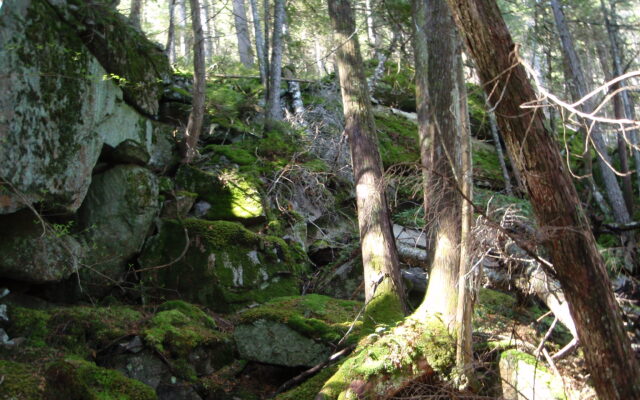
Carbon in the woods
By Karin R. Tilberg
At approximately 89 percent forested, Maine is the most forested state in the United States. These forests are also the most unfragmented forests east of the Mississippi River and are a tremendous economic engine providing employment in the wood products, outdoor recreation sectors. They provide habitat for a diverse array of species including moose, Canada lynx and Eastern brook trout, and are globally significant for migratory songbirds. However, a little-known fact is that the forests in Maine absorb or sequester more than 60 percent of human-made greenhouse gases generated in the state every year. This underscores the importance of retaining Maine’s forests so they can continue to sequester carbon as well as provide opportunities for the forest products industry and outdoor recreation.
There is much discussion in Maine about how best to mitigate climate change. The December 2020 “Maine Won’t Wait” report of the Maine Climate Council sets forth a broad and well-researched set of actions to do so. One of them is simple and relatively inexpensive: keep Maine’s forests as forests. This opportunity is right in front of us, but is often relegated to the back burner. This action should be prioritized, and quickly.
Specifically, “Maine Won’t Wait” states that conserving forests through conservation easements is one of the more cost-effective strategies to help reach carbon neutrality by maintaining forest cover. Voluntary acquisitions of working forestland easements will support robust forest products economies, increase carbon storage opportunities, conserve biodiversity, and enhance climate adaptation and resilience for wildlife, people, and communities. The Forest Society of Maine, along with other land trusts, works with landowners who wish to retain ownership of forestland but want to prevent the land from being developed and from having public access restricted.
The Moosehead Lake region benefits from public lands, other conservation organization ownerships, and hundreds of thousands of acres of conservation easements – many of which the Forest Society of Maine holds. As a land trust, the Forest Society of Maine acquires permanent conservation easements on forestlands to ensure they are not converted to other uses such as housing, commercial or utility infrastructure development. Maintaining forestland will not happen on its own–the demand for second homes, often at the edges of woodlands, has been accelerated by the pandemic and the resulting desire to be in rural areas. For the first time in a long time, forestland acreage in Maine is starting to shrink.
Supporting organizations that create and oversee conservation easements will help ensure that forests continue to sequester carbon, support jobs, safeguard habitat for wildlife, and provide public access to the land. Consider lending your support to the Forest Society of Maine or another land trust so together we can continue to keep Maine’s forests as forests for all the benefits they provide!
Tilberg is the president/CEO of the Forest Society of Maine, a statewide land trust founded in 1984 that is working to conserve Maine’s North Woods for their ecological, economic, recreational and cultural values. FSM has helped to conserve more than one million acres of forestland. With a background in wildlife biology, law and policy, Tilberg has worked for decades to develop conservation strategies that benefit landowners, communities and businesses.